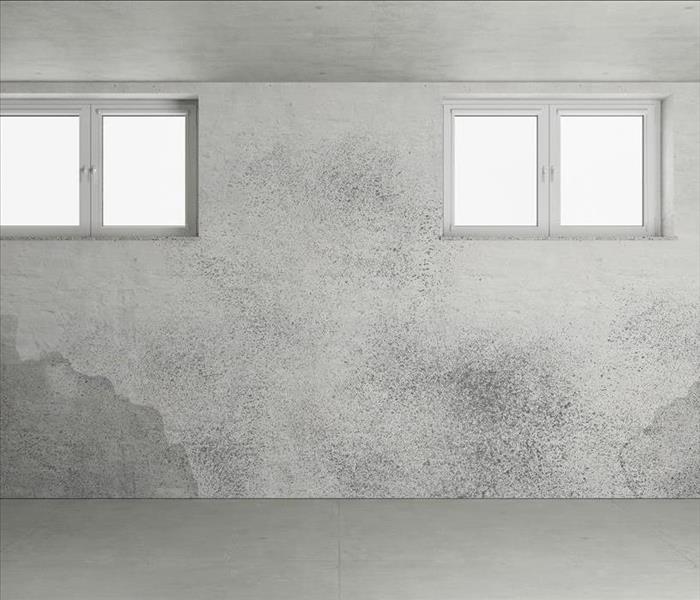Signs of Mold Damage in Your Bathroom
6/13/2023 (Permalink)
 A professional can determine the source of the mold in a safe manner. Therefore, a mold damage restoration specialist should be contacted to assess an
A professional can determine the source of the mold in a safe manner. Therefore, a mold damage restoration specialist should be contacted to assess an
What is Mold?
Mold is fungus that thrives on damp or decaying organic matter. It comes in many varieties, can be found both indoors and outdoors, and can survive in any climate during any time of year. Mold spores are everywhere. Basically, we are constantly exposed to molds.
How Does Mold Grow?
In order to grow indoors, mold needs a source of moisture, a food source, and protection from the sun. Bathrooms provide countless sources of moisture from sink to toilet, pipes in the walls, the windows, through the ceiling, and even in the air. Mold thrives in both wet areas and areas with a high level of water vapor in the air. The elevated humidity levels of bathrooms provide ample moisture for mold to grow.
Mold eats matter having particles that were or are still alive. In a bathroom this includes dirt, cotton, dust, hair, skin cells, wood, paper, and soap. Finally, bathrooms are often windowless or have very small windows, effectively protecting the mold from the sun. In sum, the moisture, food, and protection from the sun are all in ample supply in a bathroom. Thus, bathrooms are at risk when it comes to mold damage.
What are the Signs of Mold Damage?
Mold can grow within 24 to 48 hours of being exposed to damp surfaces. Mold rapidly reproduces and spreads causing mold damage. Often, signs of mold are not obvious. If you see any of the following indications of mold, investigate the issue to prevent further mold damage and the need for intensive mold restoration to your home.
- Mold has a smell! Trust your senses when looking for mold. Mold will emit an old, musty smell.
- There is visible water in the bathroom. Check the bathroom for standing or slow-draining water. This type of water can leak into grout and shower tiles. Also, look for areas that are constantly damp or wet.
- The bathroom always feels moist. If a bathroom always feels damp in the air, even hours after it has been used, it is ripe for mold growth. These areas should receive circulation from a fan or window. Stagnant air allows mold to thrive.
- Dark spots are present. Dark green or black spots show up where there is mold damage. In the bathroom, you may find these spots in the grout, on the floor, on the ceiling. Since mold ordinarily begins by growing underneath surfaces, visible spots mean you most likely already have mold damage.
- The bathroom floor feels soft or spongy. Mold and water damage can rot floors. If the floor in your bathroom feels soft or spongy beneath your feet, the subfloor may be rotten due to mold damage.
- The walls are discolored or warped. Excess bathroom moisture can cause the walls to bubble, warp, and discolor. Any of these signs may indicate mold damage and the need for mold damage restoration.
- Constant allergies and sneezing. If someone in your home is frequently experiencing allergy-like symptoms no matter the time of year, you may need to inspect for mold. Other symptoms of mold exposure include runny nose, itchy eyes, fatigue, headache, and coughing. Persons with asthma are at particular risk for respiratory issues due to mold.
What Should Be Done Once Mold is Identified?
Mold is particularly likely to multiply in a bathroom because moisture, a food source, and the absence of sunlight are all present in abundance. Cleaning mold can release the mold spores into the air, causing it to grow and spread to other parts of your home. Additionally, mold can be extremely hazardous to your health.
A professional can determine the source of the mold in a safe manner. Therefore, a mold damage restoration specialist should be contacted to assess and remediate the problem. At SERVPRO of Deerfield Beach, we are here for you to tackle any and all mold damage restoration needs. Call us today to learn more!



 24/7 Emergency Service
24/7 Emergency Service